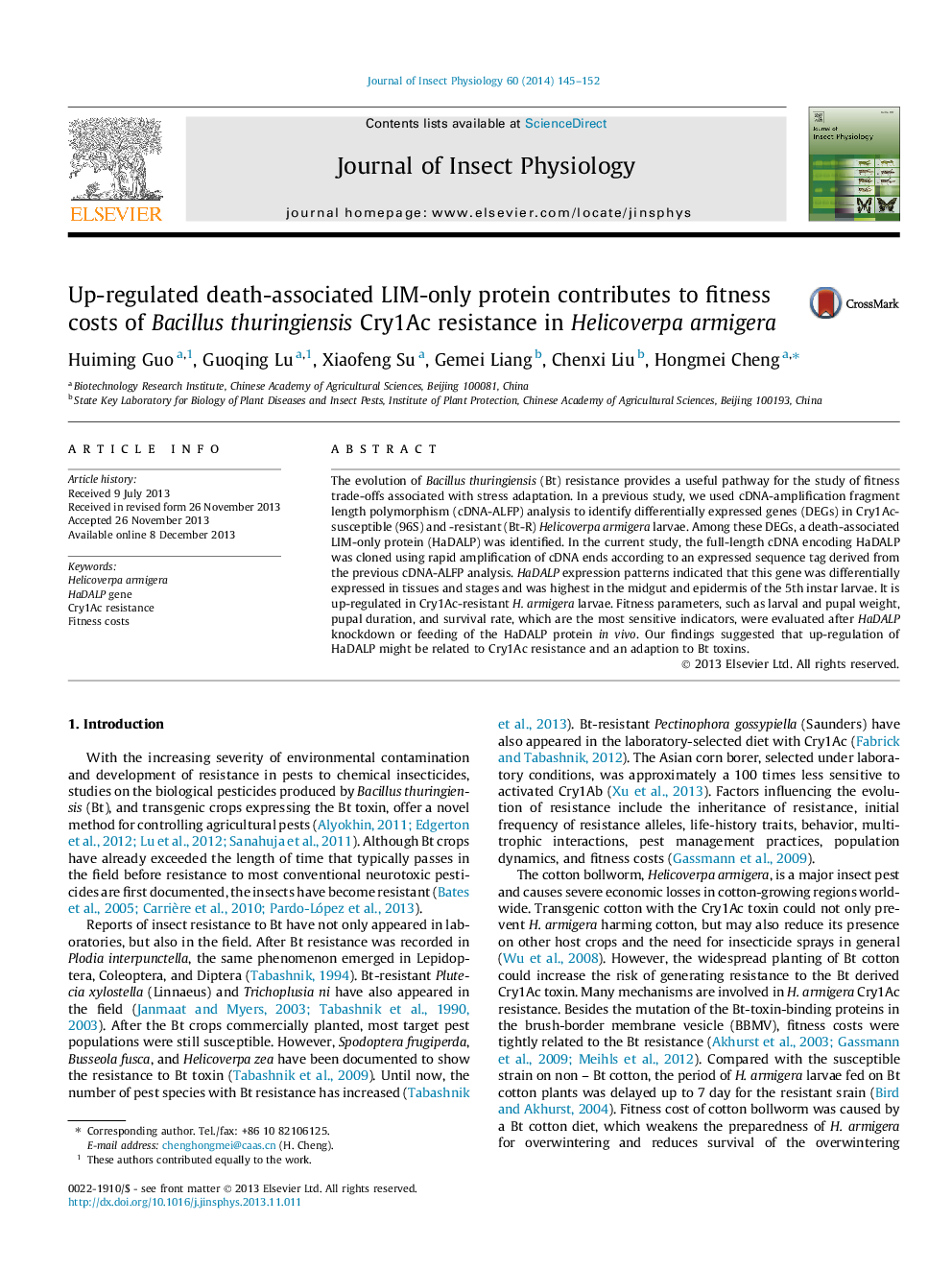| کد مقاله | کد نشریه | سال انتشار | مقاله انگلیسی | نسخه تمام متن |
|---|---|---|---|---|
| 5921723 | 1571010 | 2014 | 8 صفحه PDF | دانلود رایگان |

- The HaDALP gene was differentially expressed in stages and tissue types.
- The expression level of HaDALP was higher in Bt-R than in 96S strain.
- The growth and development were retarded after HaDALP was disturbed.
- The feeding of HaDALP protein significantly reduced larval mortality.
The evolution of Bacillus thuringiensis (Bt) resistance provides a useful pathway for the study of fitness trade-offs associated with stress adaptation. In a previous study, we used cDNA-amplification fragment length polymorphism (cDNA-ALFP) analysis to identify differentially expressed genes (DEGs) in Cry1Ac-susceptible (96S) and -resistant (Bt-R) Helicoverpa armigera larvae. Among these DEGs, a death-associated LIM-only protein (HaDALP) was identified. In the current study, the full-length cDNA encoding HaDALP was cloned using rapid amplification of cDNA ends according to an expressed sequence tag derived from the previous cDNA-ALFP analysis. HaDALP expression patterns indicated that this gene was differentially expressed in tissues and stages and was highest in the midgut and epidermis of the 5th instar larvae. It is up-regulated in Cry1Ac-resistant H. armigera larvae. Fitness parameters, such as larval and pupal weight, pupal duration, and survival rate, which are the most sensitive indicators, were evaluated after HaDALP knockdown or feeding of the HaDALP protein in vivo. Our findings suggested that up-regulation of HaDALP might be related to Cry1Ac resistance and an adaption to Bt toxins.
Journal: Journal of Insect Physiology - Volume 60, January 2014, Pages 145-152